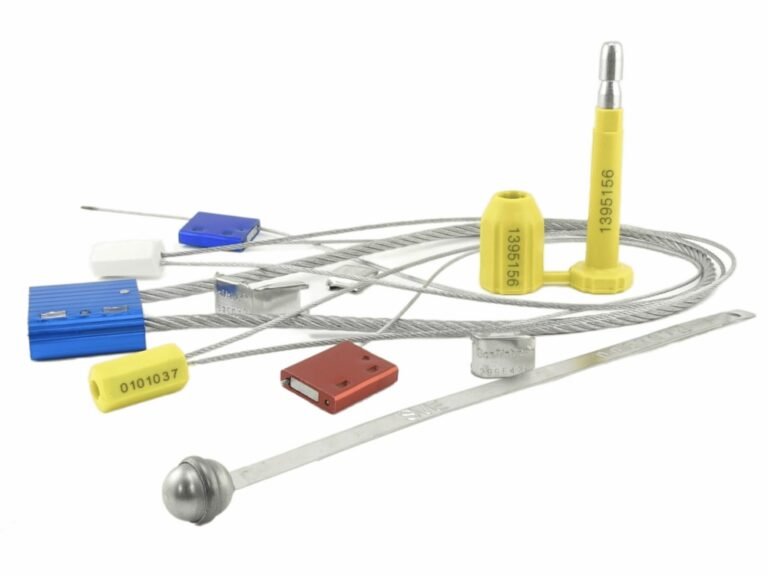Do you think a simple sticker is enough to secure your product? A standard label can be peeled off with a little heat and care, leaving you completely unaware that your package has been opened.
A VOID label is not a sticker; it's a precisely calibrated, single-use evidence system. Its layered adhesive technology is designed to "self-destruct" upon removal, leaving a permanent, unmistakable warning message that cannot be hidden.
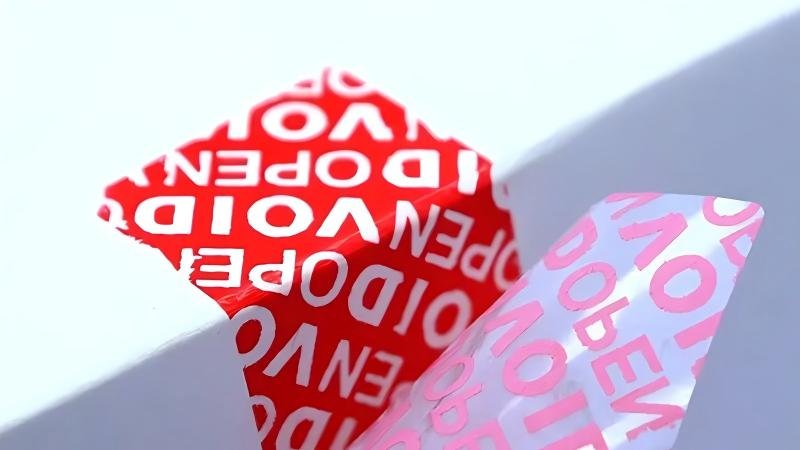
I need to be very clear about something. A true VOID label isn't a "sticker." It's a precisely calibrated, single-use evidence system. The core technology isn't about how strongly it sticks, but about how it achieves a controlled, irreversible self-destruction upon a tamper attempt. Understanding this is the crucial step from being an amateur buyer to a professional one. As a manufacturer, our expertise lies in engineering and precisely calibrating this "destruction" process for different surfaces and applications, ensuring the evidence left behind is always clear and undeniable.
The Core Mechanism: How Layered Technology Reveals the Hidden Message?
Ever wondered how that "VOID" message magically appears? It's not magic; it's a simple result of a clever, multi-layered design that's completely different from a standard adhesive label.
The secret lies in controlled delamination. A VOID label is constructed with multiple layers that have different adhesive strengths. When someone tries to remove the label, the layers are engineered to separate, permanently revealing the pre-printed hidden message.
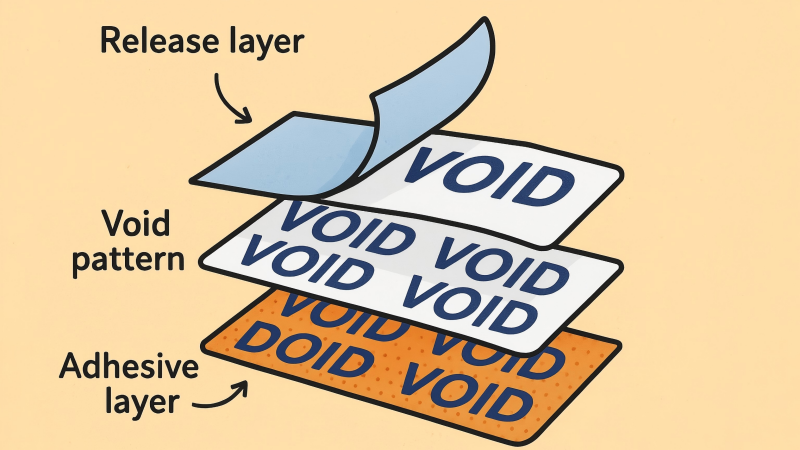
Think of it as a trap waiting to be sprung. A standard sticker has two layers: the face stock (the label itself) and a single layer of adhesive.A VOID label is more complex. It has a top film, a release layer, and a special adhesive pattern. We precisely calibrate the bond strengths between these layers. The bond between the top film and the release layer is intentionally weaker than the bond between the adhesive pattern and the surface it's stuck to. When a peeling force is applied, the system is designed to fail at that specific, engineered weak point. The top film lifts off, but the patterned adhesive message remains securely bonded to the package. It's a controlled failure that produces a predictable and permanent result.
The Key to Irreversibility: Unlocking Residue Transfer Technology?
What stops a thief from simply wiping off the "VOID" residue and pretending it was never there? It's the difference between a temporary mark and a permanent piece of forensic evidence.
The key to irreversibility is the chemical formulation of the adhesive residue. This isn't like a sticky note. The adhesive is chemically engineered to create a powerful, permanent bond with the surface, or substrate, making it impossible to remove without damaging the surface itself.
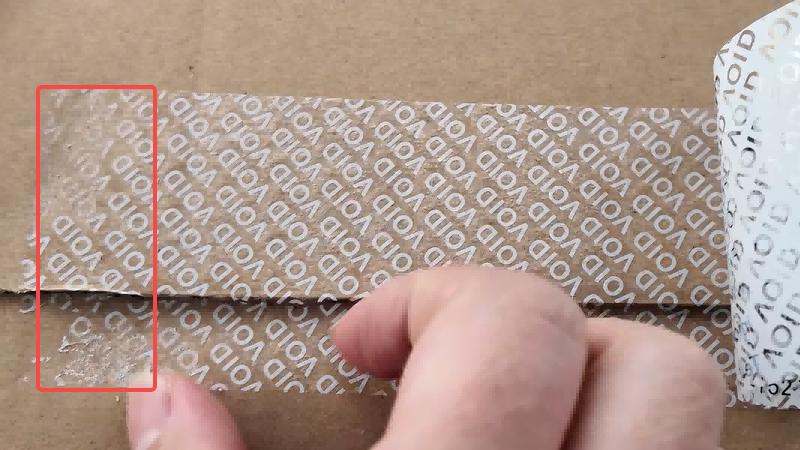
This is where the real science comes in and where we, as manufacturers, focus our expertise. The "self-destruction" must be irreversible. The adhesive used for the VOID pattern is specifically formulated for high-tack and aggressive bonding. It's designed to "love" the surface of your box more than it loves the label's top film. Once applied, it begins to form a semi-permanent bond that cures over time. Trying to remove it with solvents often just smears the message or damages the packaging, creating even more evidence of tampering. This is the core of the "evidence system" philosophy. The goal is to create a mark that cannot be cleaned, erased, or denied. It's not just sticky; it's a form of chemical branding that testifies to a tamper attempt.
Forms of Evidence: A Full Breakdown of Total-Transfer vs. Non-Transfer Labels?
Did you know that not all VOID labels are designed to leave a sticky residue behind? Using the wrong type can either damage your product or fail to provide the clear evidence you need.
There are two main types: Total-Transfer, which leaves a full adhesive residue on the surface, and Non-Transfer, which reveals the "VOID" message only on the label itself, leaving the surface clean. Each is calibrated for different applications.
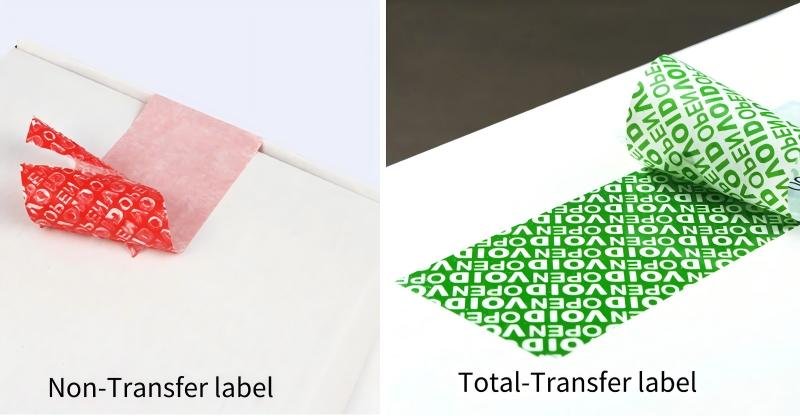
Choosing the right form of evidence is a critical part of the professional buyer's job. A single approach doesn't fit all scenarios. This is a key part of the calibration process. A misapplication can be costly. For example, putting a total-transfer label on a reusable asset like a plastic tote or a medical device would be a disaster, requiring extensive cleanup. Conversely, using a non-transfer label on a disposable cardboard box might not provide the aggressive, in-your-face evidence required for high-risk shipping. Understanding the tactical difference is essential for building an effective security protocol.
| Label Type | How It Works | Best For | Key Advantage |
|---|---|---|---|
| Total-Transfer | Leaves a full "VOID" adhesive residue on the surface AND a void pattern on the label. | Disposable packaging like cardboard boxes, pallets, envelopes. | Provides the most aggressive, undeniable evidence on the package itself. |
| Non-Transfer | Leaves the surface perfectly clean. The "VOID" message appears only on the label itself. | Reusable assets: plastic totes, airline doors, electronic casings, glass surfaces. | Secures assets without causing damage or requiring cleanup. |
From Theory to Reality: How a Tamper Attempt Triggers the Evidence Chain?
How does this calibrated system perform in the real world when faced with an actual tamper attempt? It's a rapid, irreversible chain reaction that begins the moment the label is lifted.
The evidence chain is triggered by peeling force. This force overcomes the weaker bond within the label's layers, causing delamination and instantly revealing the hidden VOID message, creating an undeniable record of the event.
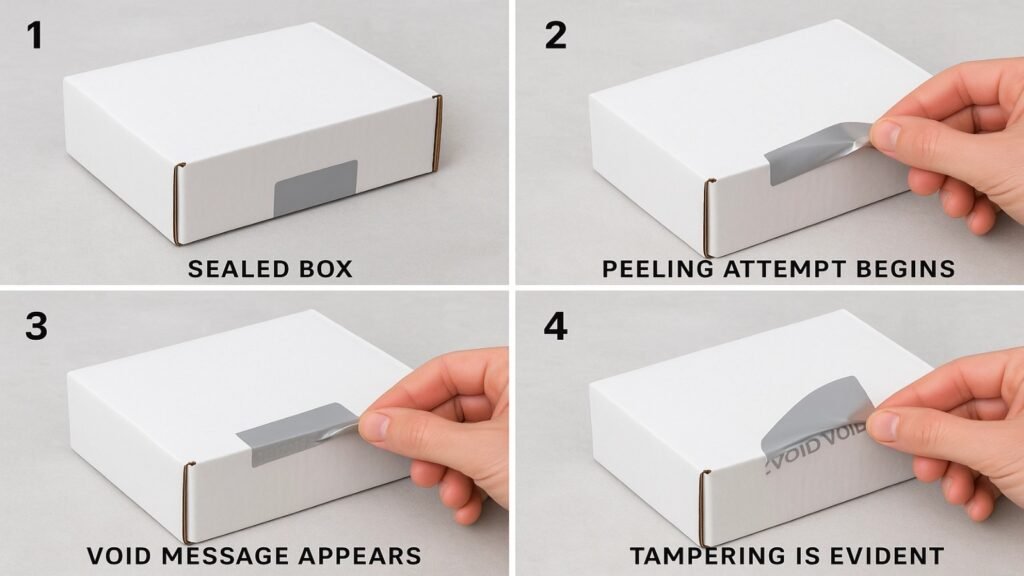
Let's walk through the exact sequence of this self-destruction system when it faces a real-world threat. This entire event takes only seconds and is completely irreversible once started.
Step 1: Arming the System (Application)
The label is applied to a clean, dry surface. The aggressive adhesive immediately begins to cure, forming an increasingly strong bond with the substrate. At this point, the evidence system is armed and waiting for a trigger.
Step 2: The Initial Breach (Tamper Attempt)
A thief inserts a fingernail or blade under the edge of the label and begins to peel. This introduces the external peeling force that the system is specifically engineered to detect and react to.
Step 3: Calibrated Self-Destruction
The peeling force instantly overcomes the weaker, calibrated bond between the top film and the release layer. The system fails exactly as it was designed to, a process of controlled delamination that is impossible to stop once it has begun.
Step 4: Permanent Forensic Evidence
The layers separate. With a total-transfer label, the "VOID" adhesive pattern remains permanently bonded to the package. The evidence is now a permanent part of the chain of custody. There is no going back.
Ensuring Evidence Integrity: The Critical Match Between Surface and Adhesive?
Ever seen a security label that you could peel off easily without triggering the VOID message? This is a classic case of system failure, not because the label was bad, but because it was mismatched with the surface.
For the evidence system to work, the adhesive must bond more aggressively to the application surface than it does to its own film. A mismatch between the adhesive formula and the surface type is the number one cause of failure.
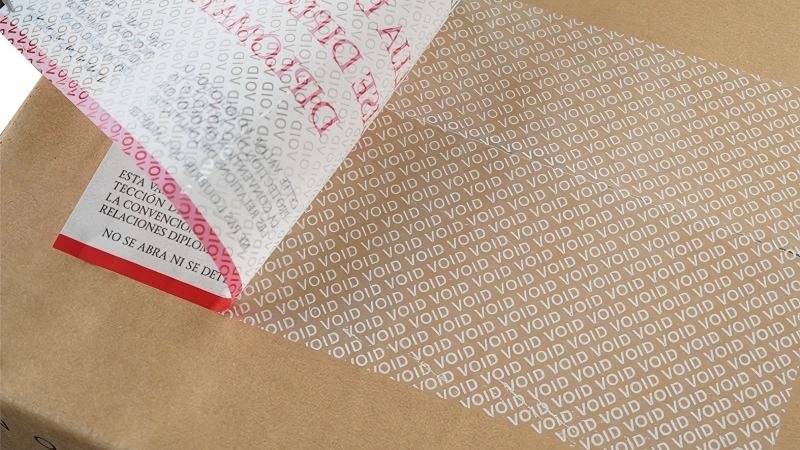
This is the final, and most crucial, step in our calibration process. The world is not made of one uniform material. You have porous surfaces like cardboard, smooth non-porous surfaces like glass and metal, and tricky low-energy surfaces like certain types of plastic (polypropylene).
We use different adhesive formulations for each. Using an adhesive designed for cardboard on a textured plastic tote box may result in a weak bond to the surface. This means when a thief peels the label, the entire label might lift off without delaminating, because the path of least resistance was the weak bond to the tote. The evidence system fails. As a professional buyer, you must specify the application surface. As expert manufacturers, our job is to provide the perfectly calibrated adhesive system to ensure that label self-destructs as intended, every single time.
Conclusion
Stop thinking of VOID labels as mere stickers. They are single-use evidence systems designed for controlled, irreversible self-destruction. Their reliability depends entirely on the precise calibration between their layers, adhesive, and your specific application surface.
Get Your Evidence System Calibrated by Experts
At ProtegoSeal, we are specialists in calibrating tamper-evident technology. We'll help you select the precise VOID label system that matches your needs, ensuring your evidence chain is unbreakable. Contact me for a consultation and samples.

